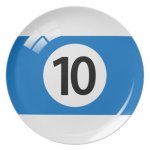It doesn't, which is why I don't understand why instructional aids don't simply use X,Y. I've seen it in _SOME_ aids (not many at all).
This is a 14 by 14, but it probably should be a 10 by 10. People can visual smaller sections like 5 to the the left 5 to the right, thus 20% steps. So if you were using 20% steps, instead of -2, 2 like in the picture, you could use -2, 2.3 and the 2.3 could easily be visualized between 2 and 3 (which would then be 46% whichever direction from 0% or 0,0... center).

Yeh I know, you're wondering how long it took me to get my P.H.D. in graphic arts... about 12 years.
Nice. I like this. I would like to have one marked in 3.1mm increments, matching the quarter tip measurement of a 12mm to 13mm tip size. Then the tip could be used in fairly precise quarter increments, making it easy to visualize and easy to determine exactly how much a certain fractional tip offset affects the shot, as far as spin, diamond movements, etc... The Rempe training cb is similar to your image. Not sure what the distance is between marked increments. In your illustration they are 3.8mm increments with 1.9mm smaller increments in between.
Last edited:
